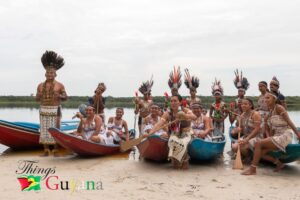Guyana by extension has many mountainous communities, but one that is very intriguing, is the village of monkey mountain. Monkey Mountain or the traditional name when the village was established “Wandike” is nestled beautifully in the North Pakaraima Mountain Range.
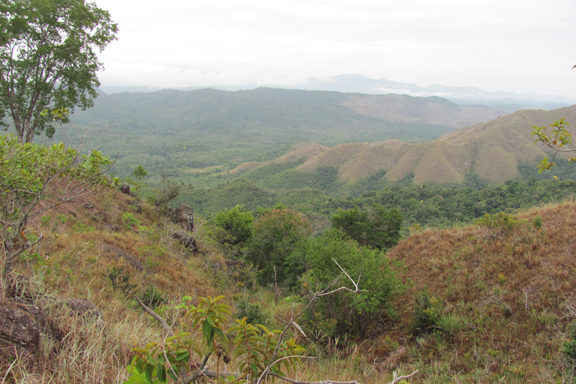
The raw beauty around: https://louisrushmore.wordpress.com/2013/02/12/riding-rainbows-to-monkey-mountain/
General Information
Monkey mountain is located in Region Eight -Potaro-Siparuni, in the vicinity of the Brazilian border where it lies seventeen hundred feet above sea level.. The Potaro-Siparuni Region gets its name from the Potaro and Siparuni Rivers, which are tributaries of the Essequibo River. It is a predominantly forested highland with a small portion of hilly sand and clay, this region is home to the famous Kaieteur and Orinduik Falls. Monkey mountain forms part of a community in the interior savannah. The village consists of approximately over 1000 residents and is managed by a Toshao and district development officer for the region. The Toshao or the village leader is responsible for the affairs of the village and is expected to inform the district development officer who overseas the operations of the village. The primary language used is Patamona and Macushi language as the village is inhabited by two main tribes: Patamona and Macushi. Villages surrounding Monkey Mountain includes Paramakatoi, Kato, Kurukubaru, Maikwak and Tuseneng which are homes to mostly Amerindians.
Infrastructure
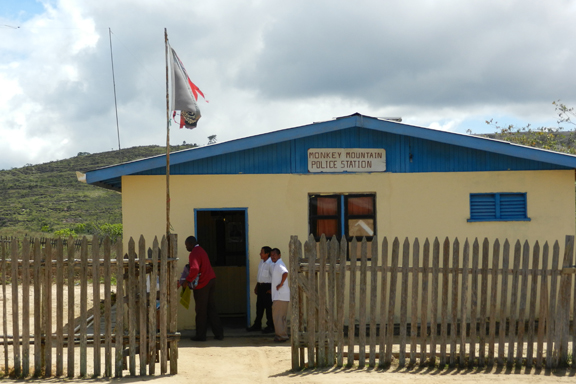
The Police Outpost in the Village: https://louisrushmore.wordpress.com/2013/02/12/riding-rainbows-to-monkey-mountain/
The roads of Monkey Mountain are mostly clay. In addition, there is a road connecting the village Karasabai to Monkey Mountain and an airstrip to facilitate airplanes in the area. The village is equipped with a police outpost, schools (Monkey Mountain Primary School) and other modern-day facilities while rich in its indigenous culture.In the village, the creek is the main source of water in addition to a new water supply system through stand pipe, trestle and so on.
How to get to village
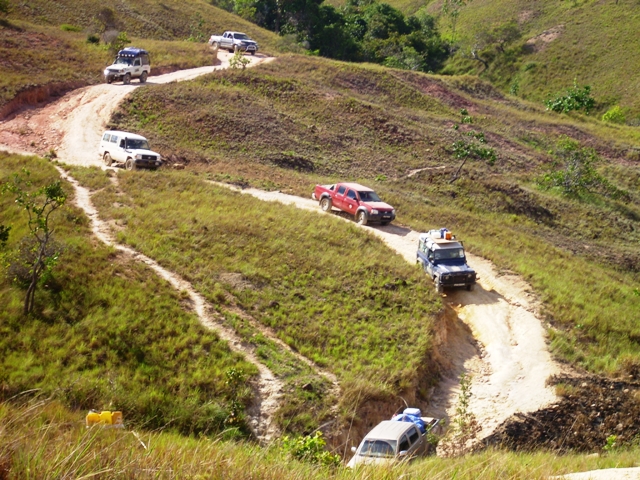
Safari Convoy | https://guyaneseonline.net/2012/03/23/tenth-pakaraima-mountain-safari-promises-a-great-experience/
The village is accessible by either road or air. Ogle International Airport provides flights that travel to Interior locations thereby facilitating access to the village. However, traveling by air is much faster than if one were to travel by road. In addition, traveling by road is subject to faults due to the structure of the road. Moreover, the best time to travel would be during the day in a fairly good weather.
Economic activities in the village
The main economic activities of the village are traditional farming, hunting and fishing and mining.
Traditional farming
Traditional farming is the ancient food production system and the original type of agriculture it is has been practiced for thousands of years. Members of the community usually creates their own produce as a means of survival.
Hunting & Fishing
Hunting is the practice of killing or trapping animals, or pursuing or tracking them with the intent of doing so. Animals that are hunted mostly in the village are Labba and the anteater. Fishing, an activity for catching fish is another source of food in the community.
Mining
Mining is the extraction of valuable minerals or other geological materials from the earth, usually from an orebody, lode, vein, seam, reef or placer deposit. These deposits form a mineralized package that is of economic interest to the miner. The village is said to be the home of many precious stones and minerals that have the ability to produce jewellery.
Major attraction of the village
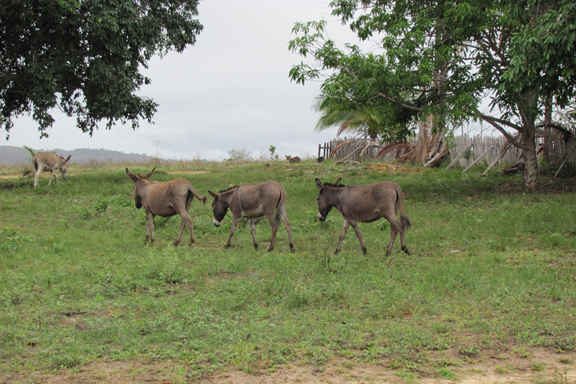
Donkeys in Monkey Mountain | https://louisrushmore.wordpress.com/2013/02/12/riding-rainbows-to-monkey-mountain/
The major attraction of the village is the North Pakaraima Exposition. The event is a collaboration between the residents of the North Pakaraima, the regional administration and the Ministry of Indigenous Peoples’ Affairs hosted in Monkey Mountain. The Expo was first opened in 2014. The two-day event, entertains hundreds of villagers as well as residents from neighbouring villages converge in Monkey Mountain. It features indigenous foods, art, craft and other talents in the form of sports.
Several villages usually participate in the expo including Paramakatoi, Kato, Kurukubaru, Chenapou, Kopinang, Itabac, Kanapang, Chuing Mouth, Karisparu, Kamana, Waipa, Kaibarupai, Campbelltown, Maicobie, Tuseneng, Taruka and host Monkey Mountain.
Apart from the exhibits, villages are involved in friendly competition in football and cricket with Paramakatoi, Kato and Kurukubaru male teams and Chenapou. Kopinang and Itabac female teams in football, cricket and volleyball.
The North Pakaraima Expo over the years has significantly impacted tourism among other sectors in the region.
Monkey Mountain is filled with prestine beauty from its thatched homes and its environment in general. Many coastal persons are unable to experience this beauty mainly because of the travel expense which deprives them of such opportunity. During the course of the years there would have been some significant improvement and developments in the community. This involves having at least 3 flights per week. Most public buildings including schools, health centres, government administrative offices and recreational facilities are built with concrete and corrugated zinc sheets which in a way have changed the architecture and landscape of these hinterland communities.
REFERENCES
- https://www.guyanatimesinternational.com/?p=20027
- http://guyanachronicle.com/2013/04/06/monkey-mountain
- http://www.hartford-hwp.com/archives/41/318.html
- https://dpi.gov.gy/new-languages-to-be-added-to-indigenous-language-revival-project/
- http://www.hartford-hwp.com/archives/41/318.html
Discover more from Things Guyana
Subscribe to get the latest posts sent to your email.

